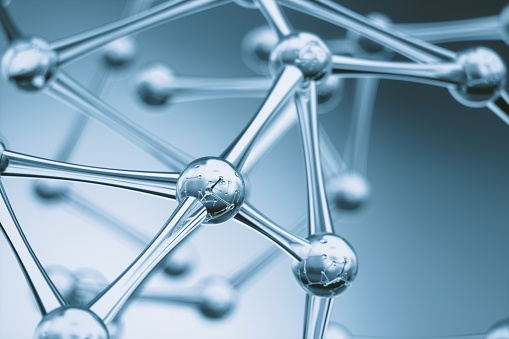Why Sugar and Cane Are Key Ingredients in Many Popular Beverages
Why Sugar and Cane Are Key Ingredients in Many Popular Beverages
Blog Article
Why Cane Sugar Processing Chemicals Are Vital for Modern Sugar Refining
The function of cane sugar processing chemicals in modern sugar refining can not be overstated, as they are indispensable to improving both the effectiveness of removal and the overall quality of the last item. Agents such as phosphoric acid and details flocculants are employed to get rid of contaminations, resulting in sugar that not just fulfills customer expectations yet also adheres to sector standards.
Function of Handling Chemicals
The efficiency of walking cane sugar handling pivots considerably on the tactical application of processing chemicals. These chemicals play an essential function in enhancing the efficiency and high quality of sugar removal and refining. From the preliminary phases of juice extraction to the final filtration actions, handling chemicals assist in various critical operations.
In the removal stage, chemicals such as phosphoric acid and calcium hydroxide are employed to optimize the information procedure, aiding to eliminate pollutants and suspended solids from the walking stick juice. This not only enhances the yield yet likewise guarantees the quality of the last product. Furthermore, representatives like flocculants help in the quick settling of impurities, thus enhancing the general process.
As the processing breakthroughs, chemicals are made use of in decolorization and formation stages. Triggered carbon and ion exchange resins serve to eliminate color and odor, making sure that the refined sugar fulfills customer high quality criteria. Inevitably, the duty of processing chemicals expands beyond operational effectiveness; they significantly influence the sensory attributes of the last item, contributing to market competition. Therefore, the meticulous selection and application of these chemicals are vital for attaining optimal results in walking stick sugar handling.
Trick Kinds Of Chemicals
Walking cane sugar handling relies upon a range of vital chemicals that facilitate each phase of production. These chemicals play essential duties in clarifying, lightening, and cleansing the sugar removed from walking cane.
One primary category of chemicals consists of flocculants, such as polyacrylamide, which aid in the explanation procedure by promoting the gathering and settling of impurities. Furthermore, calcium hydroxide is frequently utilized to neutralize level of acidity and assist in the removal of non-sugar elements.
Whitening agents, such as turned on carbon and sulfur dioxide, are used to decolorize the syrup, causing a clearer last product. These chemicals aid remove shade compounds that may affect the sugar's appearance and marketability.
Moreover, phosphoric acid functions as a pH regulatory authority throughout the handling stages, making certain optimal conditions for the enzymatic activities involved in sugar removal and purification.
Other important agents consist of edta (ethylenediaminetetraacetic acid), which chelates metal ions that might catalyze unwanted reactions, and salt hydroxide, which aids in pH control throughout the refining procedure. Jointly, these chemicals enhance effectiveness and ensure a top notch walking cane sugar item.
Advantages for Sugar Quality
Typically overlooked, using specific handling chemicals significantly boosts the general top quality of cane sugar. These chemicals play a crucial duty in refining procedures, making certain that the last item fulfills stringent industry criteria for pureness and preference.

Additionally, processing chemicals help in attaining a consistent granulation and structure, which are essential for customer approval. By managing the crystallization process, these chemicals make certain that the sugar crystals create evenly, leading to an extra enticing item that liquifies well in various applications.
Furthermore, the usage of these chemicals can enhance the life span of cane sugar by lessening dampness absorption and microbial growth. Overall, address the strategic application of processing chemicals is essential for providing top notch walking cane sugar that satisfies customer expectations and market demands.
Ecological Effect Considerations

Moreover, the energy-intensive nature of sugar refining, worsened by chemical usage, usually causes increased carbon discharges. This adds to climate change and increases issues concerning the sustainability of present refining techniques. Furthermore, the sourcing of these chemicals might entail techniques that endanger biodiversity, such as monoculture farming, which minimizes the strength of agricultural ecosystems.

To alleviate these impacts, sugar refiners are significantly discovering lasting choices and adopting best practices that decrease chemical use. Applying extensive environmental monitoring systems can help make certain that the refining process aligns with environmental standards and advertises biodiversity. Ultimately, a balanced approach that prioritizes both sugar high quality and ecological stewardship is vital for the lasting feasibility of the sugar market.
Future Trends in Refining
As the sugar industry comes to grips with the environmental obstacles associated with typical refining techniques, ingenious strategies are emerging to enhance both performance and sustainability. One considerable fad is the adoption of eco-friendly chemistry concepts, which focus on using non-toxic, naturally degradable processing chemicals. This shift not only reduces environmental impact but also addresses customer need for cleaner check my source production techniques.
One more promising advancement is the execution of sophisticated filtering modern technologies, such as membrane layer separation and adsorption procedures. These strategies improve the clearness and top quality of the sugar while minimizing the quantity of wastewater generated during refining. Furthermore, the assimilation of digital modern technologies, including IoT and AI, is changing functional effectiveness by making it possible for real-time tracking and predictive upkeep, hence reducing resource waste.
In addition, using by-products from sugar refining, such as bagasse and molasses, is acquiring grip. These materials can be transformed into biofuels or value-added products, adding to a circular economy within the sector. Jointly, these fads indicate a change towards more lasting practices that not only improve operational effectiveness yet likewise align with global sustainability objectives, guaranteeing the future practicality of sugar refining.
Final Thought
Cane sugar processing chemicals are crucial in modern-day sugar refining, considerably boosting the effectiveness and top quality of sugar extraction. The tactical use these chemicals not only enhances the purity and taste you could look here of the last item however additionally makes sure constant condensation and structure. As the industry progressively focuses on sustainability, the adoption of environmentally-friendly handling agents is likely to shape future trends in refining, eventually leading to better items and extended service life for customers.

Ultimately, a balanced technique that focuses on both sugar top quality and ecological stewardship is essential for the long-term feasibility of the sugar market.
Cane sugar handling chemicals are necessary in modern sugar refining, considerably enhancing the effectiveness and top quality of sugar extraction.
Report this page